Where is Chequers? Inside luxury country house and estate where Prime Minister Boris Johnson is self-isolating
and live on Freeview channel 276
Boris Johson is self-isolating at Chequers after abandoning plans to avoid quarantine by taking daily tests.
The Prime Minister and Chancellor Rishi Sunak originally said they would take part in a daily contact testing pilot instead of going into isolation after they were identified as close contacts of Health Secretary Sajid Javid, who has tested positive for Covid.
Advertisement
Hide AdAdvertisement
Hide AdBut in a major U-turn following furious political backlash over the decision, Downing Street said the two Tory ministers would be self-isolating after all.
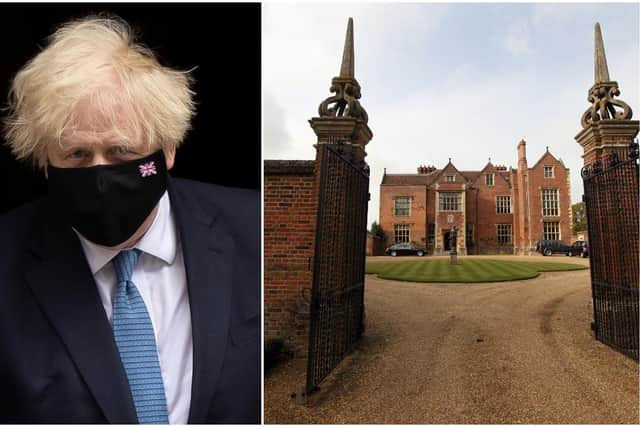

“The Prime Minister has been contacted by NHS Test and Trace to say he is a contact of someone with Covid,” a spokesman said.
“He was at Chequers when contacted by Test and Trace and will remain there to isolate. He will not be taking part in the testing pilot.”
So, where is Chequers, what is it used for - and how long will Boris Johnson isolate there?
Here’s what you need to know.
Advertisement
Hide AdAdvertisement
Hide Ad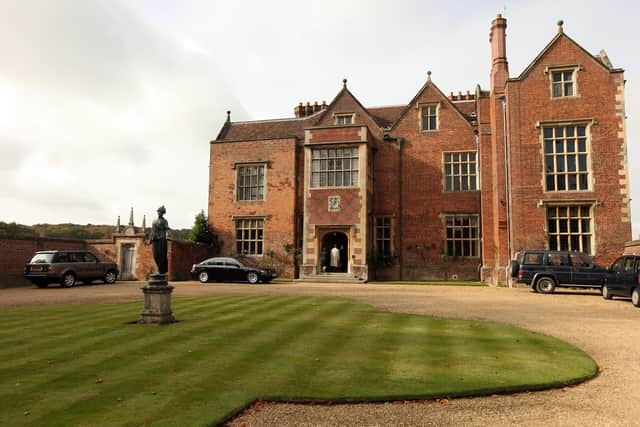

Where is Chequers?
Chequers is a luxury country residence in the Chiltern Hills, close to the village of Ellesborough in Buckinghamshire.
It’s around 40 miles north west of central London.
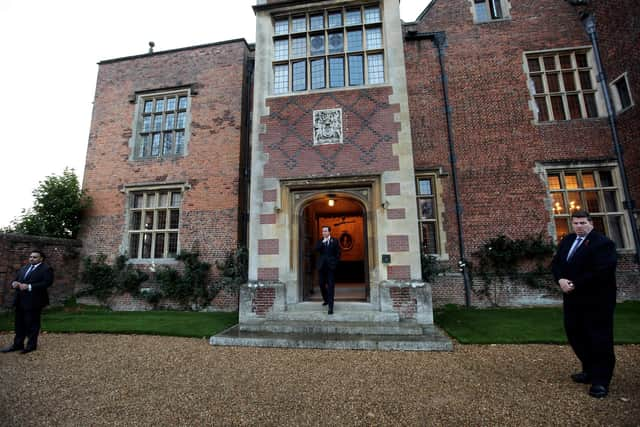

The lavish estate, complete with its indoor heated swimming pool in the Orangery, is where the current UK Prime Minister is able to unwind or entertain guests away from Downing Street.
Chequers hit the headlines last year when Mr Johnson was hospitalised with coronavirus. He stayed at the residence during his recovery after he was discharged.
Who owns Chequers?
The Grade One listed building and its 1,000 acre estate was donated to the government in 1917 by then-owner Sir Arthur Lee, First Viscount Lee of Fareham, as a country retreat for whoever holds the office of Prime Minister.
Advertisement
Hide AdAdvertisement
Hide Ad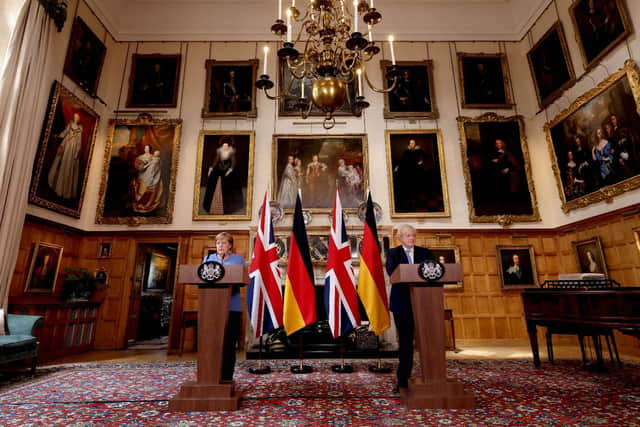

A stained glass window in the property reads: "This house of peace and ancient memories was given to England as a thank-offering for her deliverance in the great war of 1914–1918 as a place of rest and recreation for her Prime Ministers for ever."
David Lloyd George was the first Prime Minister to make use of it in 1921.
Chequers is run and managed by an independent trust and is maintained by an endowment administered by the trustees.
The trust also receives an annual grant-in-aid from public funds towards maintenance and staffing costs, which amounted to £882,000 in 2018/19.
Advertisement
Hide AdAdvertisement
Hide AdDespite being a very famous governmental building, very few people have seen inside as it’s not open to the public.
Where does the name come from?
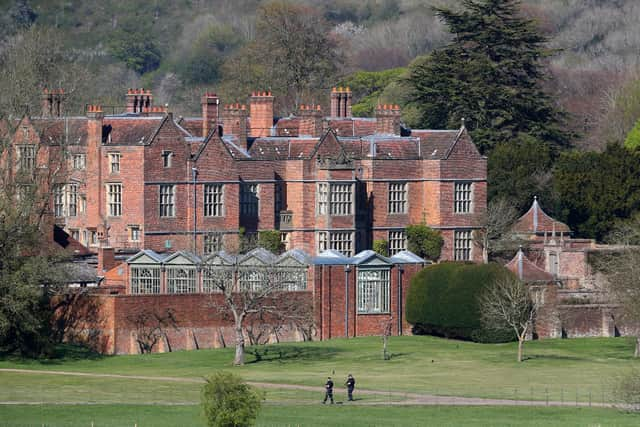

Chequers is said to get its name from an early owner of the manor of Ellesborough in the 12th century, Elias Ostiarius, or de Scaccario.
“Ostiarius” meant an usher of the Court of the Exchequer, while “scacchiera” translates to chess board in Italian.
That’s why Ostiarius’ own coat of arms included the chequer board of the Exchequer, which is potentially where the estate’s name comes from.
Advertisement
Hide AdAdvertisement
Hide AdBut some believe the house is named after the chequer trees that grow in its grounds.
The house passed through generations of the Scaccario family before it was owned by the D’Awtrey family, whose name was eventually anglicised to Hawtrey.
What is Chequers used for?
The estate was intended to draw the Prime Minister away from Downing Street to spend two days a week “in the high and pure air of the Chiltern hills and woods”, according to the Chequers Estate Act 1917.
Chequers was given to the nation at a time when Prime Ministers began to come from the middle classes rather than the landed gentry, with most not in possession of their own country estates.
Advertisement
Hide AdAdvertisement
Hide AdThe Act adds: “It is not possible to foresee or foretell from what classes or conditions of life the future wielders of power in this country will be drawn.”
The grand property has been the site of many historical moments, including playing host to Sir Winston Churchill.
Churchill wrote some of his most famous radio speeches during his stay amid World War II, penning the words in the mansion’s Hawtrey room.
Former Prime Minister David Cameron described the estate as a “good place for thinking away from London” to French president Francois Hollande during a visit in 2015.
Advertisement
Hide AdAdvertisement
Hide AdAnd the estate was used by Mr Johnson’s predecessor, Theresa May, as the location for a crunch 2018 Cabinet meeting to agree her new Brexit proposals.
In the following days, senior ministers - including then-Foreign Secretary Boris Johnson - resigned after disagreeing with the plans.
Chequers has also welcomed myriad famous visitors during its time, including the Queen, former US President Donald Trump, and Russian leader Vladimir Putin, and a string of celebrities, such as Elton John, David Bowie and Bryan Adams.
How long will Boris Johnson be staying there?
The Prime Minister tweeted a video of him saying he had been pinged by Test and Trace and would now be self-isolating until Monday 26 July.
Advertisement
Hide AdAdvertisement
Hide Ad“We did look briefly at the idea of us taking part in this scheme which allows people to test daily, but I think it is far more important that everyone sticks to the same rules, and that’s why I’m going to be self-isolating until Monday July 26,” he said.
Downing Street said Mr Johnson would be continuing to work while at Chequers, conducting meetings remotely.
Mr Johnson's official spokesman told reporters: "My understanding on this is that the Prime Minister travelled to Chequers on Friday (16 July).
"The Health Secretary took his test on Saturday, so the correct process has been followed.
Advertisement
Hide AdAdvertisement
Hide Ad"Once contacted by NHS Test and Trace over the weekend, he has isolated and has not travelled subsequently because he did not want to travel across the country."
The spokesman said Mr Johnson had initially worked at Downing Street on Friday morning, before meeting Mr Javid after lunch and then heading to Chequers at 3pm that day.
He has tested negative for coronavirus and is showing no symptoms, the Number 10 spokesman added.
Comment Guidelines
National World encourages reader discussion on our stories. User feedback, insights and back-and-forth exchanges add a rich layer of context to reporting. Please review our Community Guidelines before commenting.
